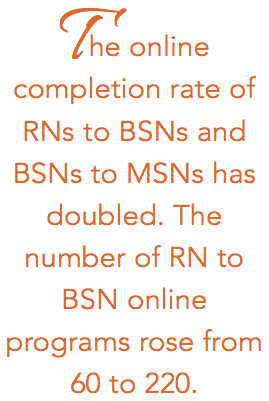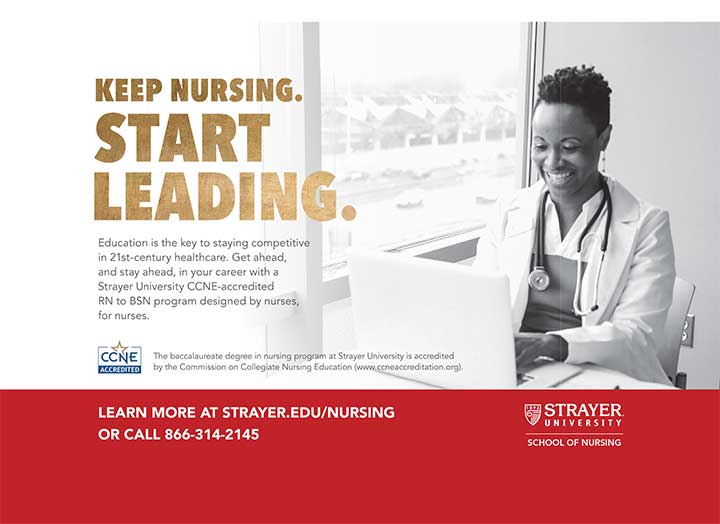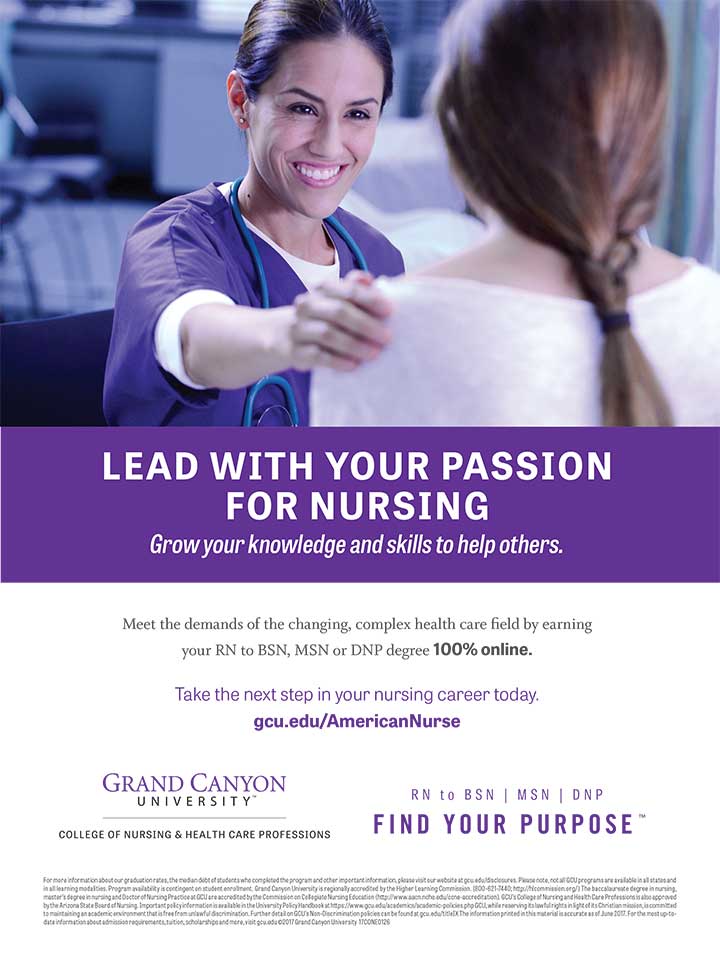As student needs and priorities shift, education adapts.
By Janet Boivin, BSN, RN
In less than half a century, nursing education has advanced from a highly structured model to one with a wide menu of options designed to satisfy the diverse learning needs of today’s students.
Now, in the first quarter of the 21st century, nursing education is an amalgam of traditional classrooms, innovative educational tracks, and technology-enhanced training. This new frontier is geared toward the learning and lifestyle needs of students and the changing healthcare environment in which new RNs will care for patients.
Accelerated and online nursing programs, once considered nontraditional, have proven effective and valuable to students and the nursing profession. Combined with the Internet, technology, and social media, nursing education is a smorgasbord of options for potential nursing students, say nurse educators interviewed by American Nurse Today.
Nursing education changing rapidly
“The use of the term ‘nontraditional’ as it relates to nursing programs has evolved over time,” says Robin Kirschner, EdD, DNP, RN, CNE, NEA-BC, CRA, Chamberlain College of Nursing’s Dean of MSN Specialty Tracks. “At one time, nontraditional would have meant any courses that were presented outside of a brick-and-mortar standard classroom. Today, higher education uses technology to support access to many types of learning opportunities, including clinical practice, academic, and continuing short-course offerings.”
Changes in nursing education are driven by changes in society, the growing use of technology, and the profession’s need for more nurses. Accelerated programs, the first of the nontraditional programs, were designed for adults with an undergraduate degree in a non-nursing discipline who wanted to enter the nursing profession. They allowed students to become licensed nurses by completing shorter, more intensive programs. These graduates proved highly successful as RNs and are sought after by employers.
Online options suit advanced degree learners


Technology allows nursing education to adapt to the schedules of busy students with families and work commitments as well as tech savvy Generation X-ers and Millennials who prefer learning online and on screens, whether laptop, smartphone, or tablet.
“Our goal is to provide broad access to high-quality education in line with the evidence that more students are gravitating to online learning,” says Joan Shaver, PhD, RN, FAAN, professor and dean of the University of Arizona’s College of Nursing in Tucson. “With good instructional design, [online education] provides new ways to enhance learning and to be more efficient and respectful of students’ time, many of whom are working to cover the rising costs of education.”
Online education has helped fuel an increase in licensed RNs obtaining their BSNs, MSNs, and doctorate degrees. These options particularly suit working nurses with families, allowing them to choose when and where they want to learn.
When online nursing programs first became available, educators were skeptical of their value.
“The skepticism was related to fear—from fear of a loss of control to a sincere concern for whether a nontraditional educational environment would lead to content comprehension, mastery, and application,” Kirschner says. “Today, as we recognize the academic achievement equivalency between the online or nontraditional academic environments and traditional environments, we’re able to maintain a high level of education as we prepare nurses to meet the needs of their patients
and the communities they serve.”
Increasing the number of advanced degree RNs
Both online and accelerated nursing programs have contributed to the increase of RNs with BSNs and advanced degrees that was recommended in the Institute of Medicine’s (IOM) The Future of Nursing: Leading Change, Advancing Health 2010 report. The report called for 80% of RNs to have a BSN or higher degree by the year 2020. It also said, “Nurses should achieve higher levels of education and training through an improved education system that promotes seamless academic progression.”
Online BSN- and MSN-completion programs have fueled the race for BSN completion. The online completion rate of RNs to BSNs and BSNs to MSNs has doubled, says Juliann G. Sebastian, PhD, RN, FAAN, chair of the AACN board of directors and dean of the University of Nebraska Medical Center College of Nursing. In addition, the number of RN to BSN programs increased from 152 in 2010 to 346 today, and completely online BSN to MSN programs rose from 60 to 220, according to AACN’s latest annual survey.
Accelerated nursing programs continue to be an important pathway into nursing for individuals with degrees in other fields who are looking to change careers, Sebastian adds. (See Is an accelerated program right for you? on page 10.)
Tina Gerardi, MS, RN, CAE, deputy director for Academic Progression in Nursing (APIN), a grant initiative of the Robert Wood Johnson Foundation in partnership with the Tri-Council for Nursing and administered by the American Organization of Nurse Executives, says seamless academic progression and accelerated programs have indeed helped the numbers. In 2010, first-time NCLEX test takers with a BSN or MSN was 39.3%. In 2015, it was 44.9%.
APIN collaborates with state Action Coalitions and their partners to accelerate implementation of promising practices that will help states achieve the IOM’s goals.
Shaver believes that accelerated and bridge programs for those with either a community college nursing degree or with a degree in another field are conducive to bypassing the BSN


and moving straight to a general master’s degree.
University of Arizona has a conventional BSN entry into nursing program and an
MSN entry to the profession. In 2013, the college of nursing launched an online general master’s degree program in clinical systems leadership.
“This program is specifically designed for practicing RNs who have earned an associate’s degree from a community college (44 credits) by merging baccalaureate with graduate-level studies (31 credits). They graduate with a general master’s degree and not the more usual advanced specialty practice master’s degree,” Shaver says. “Since RN enrollees have learned basic nursing, the greatest emphasis is on knowledge and skills for practical clinical systems leadership.”
University campuses still an option
The educators interviewed agreed that brick-and-mortar classrooms will probably always be an option for nursing education. Clinical practice simulation and real patient field practice isn’t likely to be fully replaced with technology anytime soon.
“But even face-to-face programs use some online components or elements that augment classroom discussion,” Gerardi says. “This gives students an enriched learning environment and allows faculties to be more responsive to students’ personal needs.”
Says University of Arizona’s Shaver, “It is hard to know how long we will have students who prefer the on-campus intensive experience. I think it best for educators to be planning a shift in strategy to better match the evolving lifestyles of students and their use of technology now and in the future.”
Janet Boivin is a freelance writer.






















